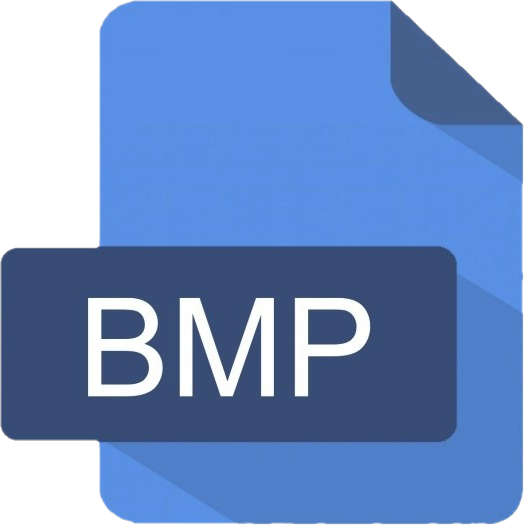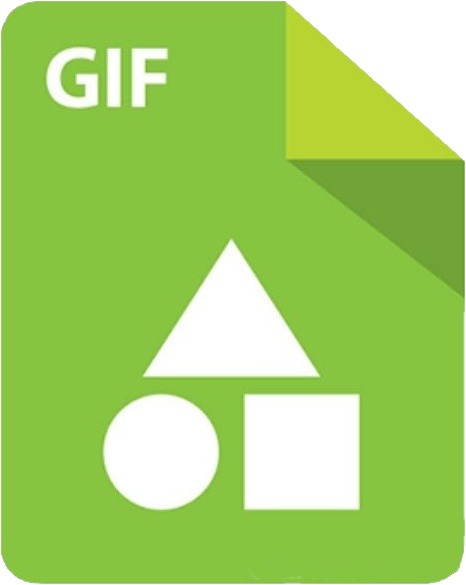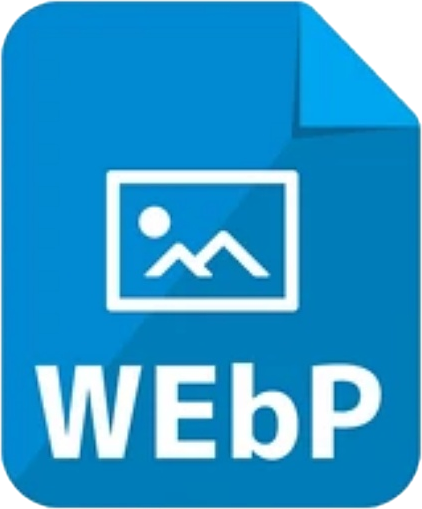
AV1F Image File Format an open, royalty-free image file format specification for storing images or image sequences compressed with AV1 in the HEIF container format.[1][2] It competes with HEIC, which uses the same container format built upon ISOBMFF, but HEVC for compression.

BMP Bitmap Image File is a format developed by Microsoft for Windows. There is no compression or information loss with BMP files which allow images to have very high quality, but also very large file sizes. Due to BMP being a proprietary format, it is generally deprecated in favor of TIFF files.

GIF "JIFF" Graphics Interchange Format files are widely used for web graphics, because they are limited to only 256 colors, can allow for transparency, and can be animated. GIF files are typically small in size and are very portable.

JPEG Joint Photographic Experts Group is a commonly used method of lossy compression for digital images, particularly for those images produced by digital photography. The degree of compression can be adjusted, allowing a selectable tradeoff between storage size and image quality.

PNG Portable Network Graphics files are a lossless image format originally designed to improve upon and replace the gif format. PNG files are able to handle up to 16 million colors, unlike the 256 colors supported by GIF.

SVG Scalable Vector Graphics and is an XML based vector image format for two-dimensional graphics. It can be searched, indexed, scaled and compressed and can result in smaller file sizes than other file formats, which makes it ideal for web.

TIFF Tagged Image File Format are lossless images files meaning that they will not lose any image quality or information although there are options for compression, allowing for very high-quality images but also larger file sizes.

WebP "Weppy" a raster graphics file format developed by Google intended as a replacement for JPEG, PNG, and GIF file formats. It supports both lossy and lossless compression, as well as animation and alpha transparency.

HOME
Columns:
Tech Fixed Nav
HTML CSS
Technology Stack
PHP JavaScript Python
SQL AJAX XML PERL
Five Six Seven Eight
Database 1+2+1
LLMs Expand
ADA Website Compliance
Dyslexic Guidelines
OSI Model
Layouts:
Dark Web 1+2 Layout
Protocols 1+3 Layout
Malware 1+4 Layout
Code Sharing 2+4 Layout
Search Engines 3+1 Layout
Custom ROMs 4+1 Layout
AI Websites 4+2 Layout
Offset 70-30 Layout
Cloud Services 1+2
Top Level Domains
ZigZag Layout
Database:
Database Select Query
Database Sort Query
Database Select Europe
Database Select Japan
Database Select US
Database Select Vehicle
Photos:
Photo Full Width
Photo Gallery
Photo Grid
Photo Carousel
Photo Album
Photo Filter
Photo Select
Photo Accordion
Photo Zoom
Photo Scroll

Quizzes:
Web Design Quiz x3
Web Design Logo Quiz x3
Web Coding Quiz x10
Web Development Logo Quiz x10
Graphics:
Graphic Design
Image Formats
Images Per Page
Material Cards
Search Engines
Browser Tier List
Magnify Window
Large Language Models
Autonomous Companies
Website Standards
Plethora:
Technology Chart
Parsing Python Scripts
Frameworks
Shopping Cart
Website Standards
AJAX Interactive XML
W3C
XHTML
Website Coding
Fediverse
About Eddie Jester